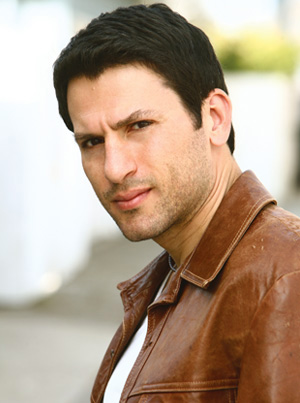Henry Beylin directs the wine program at Gjelina, where he’s worked since the restaurant opened nearly six years ago. He and Joshua Frederick have assembled a by-the-glass list running from Burgundy to Hungarian pinot noir and on to cabernet from Washington’s Wahluke Slope.


What would you say are some of the strengths on your wine list?
We like a whole range of wines, but Italy, France, Germany, Austria are sort of a focus. I’ve always had an interest in Central European wines, especially Slovenia, Croatia, and Hungary. I see lot of value in those wines; their traditions are as old as anywhere else in Europe. We always have a few wines from those countries, not because it’s cool or that it sets us apart but because they’re always good and interesting, and you almost never have to sell the wine for more than $55 or $60.
Their wine culture seems very old and new at the same time, the techniques are old but their practices are streamlined and efficient. I pour a Hungarian pinot noir by the glass from Villanyi [Vylyan Vineyards] whenever I can get it; it’s got all of those old world elements, mushroom, tree bark, forest floor flavors; I sell 2 or 3 pallets a year.
There are others, like the wines from Demeter Zoltan, which are quite expensive. They’re a hand-sell at over $100 a bottle, but they’re well worth it.
Is there a style of wine or a practice you favor on your list?
I’d say that all the wines we sell are traditionally made. They generally do not emphasize fruit, instead they emphasize a somewhat rustic, earthy or mineral character. All of our wines are from traditional places, made in a traditional way—even the domestic ones—and they must speak of a tradition, or a place, or a method.
If we’re going to have a cab franc on the list it’s going to come with a lot of herb. Our barbera is going to have bright cherry fruit—an acid-driven wine with that combination of bitter and sweet you see in most Italian wines. We have a ribolla gialla that sees significant skin contact, a big sturdy white wine that can stand up to pork and duck, most types of sausage, even lamb—traditionally the type of food they eat in Northeast Italy. Even our pinot grigio is made with some skin contact, in the traditional style of a red wine, with similar structure and tannin and flavor notes. Of course, it’s so dark in the place at night I’m not sure people realize it’s an orange wine!
Your list is somewhat eclectic for Los Angeles. What do you say to people who doesn’t see what they’re looking for?
At this point most people come in and let us guide them. Some have questions, and want to be taken from place to place on the list, or they want a little more instruction. Once in a while we get a comment that there’s not enough domestic wine on the list, nothing from Napa or whatever. I tell them if they made better wine there I’d carry it. Having said that, Arnot Roberts is my favorite domestic producer. We’ve carried whatever we can, chardonnays from Santa Cruz Mountains, the pinots, the Sonoma syrahs.
What are the whites that move when the weather’s good?
Vermentino has hit some sort of popular note. It’s sort of a known variety, people ask for it or are happy we have it. I have a new respect for pinot blanc; we’re pouring one from Italy, Stroblhof, and another one from Germany. The well made ones, from cooler regions and harsher soil conditions have certain fatness in the mid-palate combined with an underlying minerality that ends up being delicious.
Are there any trends in your by-the-glass program that you’d like to share?
We pour an older wine from Etna Rosso from Calabretta. It’s not a flavor set that most people have experience in: It’s an ashy, volcanic, mineral driven red wine, but almost everyone who tries it marvels at it, and gets multiple glasses. I’ve been really pleased and surprised it would do that well.
I’ve put on a few higher-end by-the-glass wines and I’m surprised they’re selling. I was a little nervous—we try to maintain our status as a bistro, and have no by-the-glass wines over $15—but wines get more expensive every year and we can’t really stop that. People will ante up for a good Barolo, or a premier cru class of Burgundy. Also Champagne is doing well again, which it wasn’t, really, when we opened. I have two Champagnes by the glass at around $19; they’re underpriced, but I want people to have a proper glass and not have price be an issue. Every year, more and more people are willing to treat it as a wine that goes with food and not just something to celebrate with.
Patrick J. Comiskey covers US wines for Wine & Spirits magazine, focusing on the Pacific Northwest, California’s Central Coast and New York’s Finger Lakes.
















